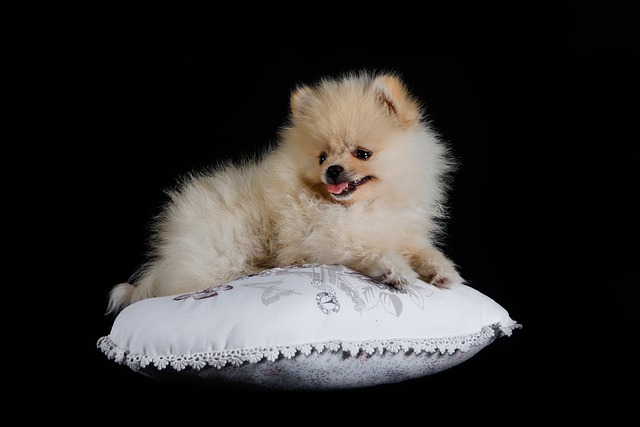
What is the best type of training for a dog?
There’s no one-size-fits-all answer to what makes the best dog training, but most experts agree that methods built on positive reinforcement tend to yield the most lasting results.
You’ve locked up your apartment, feeling excited for a day out, only to return home to a scene of chaos: your once - pristine coffee table is now a splintered mess, and your sofa cushions look like they’ve been through a shredder. If you’ve ever asked yourself, “How do I stop my dog from chewing on furniture when left alone?” you’re not the only one facing this furry - fueled dilemma. As an editor who’s guided countless American first - time dog owners through similar struggles, I’m here to share strategies that blend science, safety, and a deep understanding of canine behavior.
First, let’s dig into why dogs turn into little destroyers when left alone. For many pups, separation anxiety is the culprit. Dogs are social animals, and being left solo can trigger stress, leading them to chew as a coping mechanism. Others might simply be bored—with nothing else to do, your furniture becomes an appealing outlet for their pent - up energy. From a biological perspective, chewing also satisfies their natural instinct to use their jaws, which harks back to their wild ancestors’ hunting and foraging days. Understanding these root causes is crucial for effective solutions.
Now, onto the practical steps. One of the most effective strategies is crate training. Think of a crate as your dog’s cozy “safe space.” Line it with a soft blanket, add a few of their favorite chew toys, and make sure it’s big enough for them to stand up, turn around, and lie down comfortably. Gradually introduce the crate during short periods while you’re home, rewarding your dog with treats and praise when they enter willingly. Over time, they’ll associate the crate with positive experiences, and it can keep them safe and away from your furniture when you’re out. Just make sure not to leave your dog in the crate for too long; in the US, animal welfare guidelines recommend limiting crate time based on your dog’s age and needs to avoid distress.
Another key approach is providing mental and physical stimulation before you leave. A tired dog is a well - behaved dog. Take your pup for a brisk walk, play an intense game of fetch, or give them a puzzle toy filled with treats. Brands like Kong offer durable toys that you can stuff with peanut butter or wet food, keeping your dog occupied for hours as they work to get the goodies out. This not only tires them out but also satisfies their urge to chew on something appropriate.

When it comes to the furniture itself, consider using deterrents. Bitter - tasting sprays, like Grannick’s Bitter Apple, can be applied to vulnerable areas. These sprays taste unpleasant to dogs but are completely safe. You can also cover furniture with protective sheets made from durable materials like canvas or vinyl, adding an extra layer that’s less appealing to bite.
In American pet culture, positive reinforcement is king. When you come home and find your dog hasn’t chewed anything, shower them with praise, a delicious treat, and lots of affection. Avoid punishing them for past destruction; scolding or hitting not only goes against the widely - embraced force - free training norms but can also worsen separation anxiety or make your dog fearful of your return.
Living in an apartment? Remember that excessive noise from a barking or destructive dog can violate lease agreements and annoy neighbors. Many buildings have rules about pet behavior, and damage to the property from chewing can lead to hefty repair fees or even eviction. Additionally, when you take your dog out for walks, always clean up after them. In most US cities, the “poop - scoop” law is strictly enforced, with fines reaching up to $250 for violations. And never forget to keep your dog’s vaccinations up - to - date, especially rabies, which is mandatory by law in almost all states. A healthy dog is less likely to engage in destructive behaviors due to underlying health issues.
In summary, stopping your dog from chewing on furniture when left alone requires a combination of understanding their behavior, providing proper outlets for their energy, using safe deterrents, and following positive training methods. By taking these steps, you can enjoy peace of mind when you’re away and come home to a furniture - intact, happy pup.

There’s no one-size-fits-all answer to what makes the best dog training, but most experts agree that methods built on positive reinforcement tend to yield the most lasting results.

Welcoming an 8-week-old puppy into your home is a joy filled with wiggly tails and endless curiosity. One of the first steps in building a strong bond is teaching them their name.

If you’ve ever sat up at night, listening to your gray-muzzled dog pace back and forth, stopping to whine or stare at a wall, you know the worry that comes with a restless senior pup.

Training a service dog starts long before they’re ready to assist with specific tasks—their journey begins with building a foundation of trust, focus, and adaptability, and the timing of this training matters more than you might think.

Watching a tiny puppy fumble through their first attempts to sit can feel like watching a little acrobat mastering a new trick.

If you’ve ever found your flower bed dug up or your favorite shrub chewed to bits, you’ve probably searched for easy ways to keep neighborhood dogs (or even your own) out of your yard.